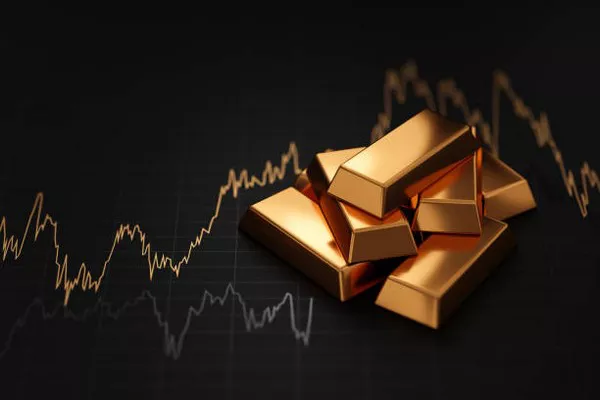Gold has been a symbol of wealth and a stable investment for centuries. Its allure has only grown with time, becoming a critical component of investment portfolios globally. Investors often hear terms like “physical gold price” and “spot price,” which are central to understanding gold trading and investing. This article delves into the nuances of these terms, examining their meanings, differences, and implications for investors.
Understanding the Spot Price
The spot price of gold is the current market price at which gold can be bought or sold for immediate delivery. It is a benchmark price set in major gold trading markets such as London, New York, and Hong Kong. The spot price fluctuates constantly during market hours due to supply and demand dynamics, geopolitical events, economic indicators, and changes in currency values.
Key Factors Influencing Spot Price:
Supply and Demand: The availability of gold and the demand from investors, industries, and central banks significantly influence the spot price.
Geopolitical Events: Political instability, wars, and other geopolitical tensions can drive investors to seek the safety of gold, pushing its price up.
Economic Indicators: Data such as inflation rates, interest rates, and employment figures can affect investor sentiment and gold prices.
Currency Fluctuations: Since gold is typically traded in U.S. dollars, changes in the value of the dollar can impact the gold spot price. A weaker dollar often leads to higher gold prices and vice versa.
The Concept of Physical Gold Price
The physical gold price refers to the actual price paid for gold in physical form, such as coins, bars, or jewelry. This price includes the spot price but also incorporates additional costs such as manufacturing, distribution, and a premium that varies depending on the type and weight of the gold product.
Components of Physical Gold Price:
Spot Price: The base price of gold, as discussed above.
Premium: This is an additional cost over the spot price, covering manufacturing, distribution, and dealer margins. The premium can vary widely based on the gold product’s form, purity, weight, and demand.
Manufacturing Costs: The cost of converting raw gold into bars, coins, or jewelry. For example, gold coins often have higher manufacturing costs due to their intricate designs and minting processes.
Distribution Costs: Expenses associated with transporting and storing physical gold safely.
Differences Between Physical Gold Price and Spot Price
While the spot price provides a standard benchmark for gold prices, the physical gold price can differ significantly due to various additional costs. Here are the primary distinctions:
Inclusion of Premiums: The spot price is a pure reflection of gold’s market value at a given time, while the physical gold price includes premiums that cover production, distribution, and dealer profits. These premiums can range from a few percent to several times the spot price, particularly for collectible coins and smaller bars.
Market Accessibility: The spot price is easily accessible and used in futures markets, ETFs, and other financial instruments. In contrast, the physical gold price involves actual possession of the metal, requiring secure storage and insurance.
Transaction Costs: Buying and selling physical gold involves higher transaction costs compared to trading gold on financial markets. These costs include dealer fees, shipping, and handling, which do not apply to electronic gold transactions based on the spot price.
Market Liquidity: The spot market for gold is highly liquid, with prices updated in real time. Physical gold markets, however, can be less liquid, especially for specific types of products like rare coins, which may take longer to sell and might not fetch prices close to the spot price.
Implications for Investors
Understanding the distinction between spot price and physical gold price is crucial for investors. Here’s how these differences can impact investment strategies:
Investment Costs: Investors in physical gold need to consider the additional premiums and transaction costs. While these costs can make physical gold more expensive, they also reflect the tangible nature of the investment, which can be a critical factor for some investors.
Market Timing: Spot price movements provide a gauge for market sentiment and can help investors time their physical gold purchases. However, because physical gold prices include premiums, investors need to be aware that buying during periods of high demand can result in higher premiums.
Diversification: While both spot and physical gold can diversify an investment portfolio, physical gold adds an element of security as a tangible asset that is not subject to the same market risks as financial instruments.
Storage and Security: Physical gold requires secure storage, which can add to the cost. Investors must weigh the benefits of having a tangible asset against the expense and logistics of safe storage.
Liquidity Considerations: Investors should be prepared for potential liquidity challenges with physical gold. While the spot market allows for quick and easy transactions, selling physical gold might take more time and involve finding a buyer willing to pay the desired price.
See Also Why Gold Futures Prices Typically Exceed Gold Spot Prices
Conclusion
The relationship between the physical gold price and the spot price is fundamental to understanding gold investment. While the spot price offers a benchmark for gold’s value, the physical gold price reflects the realities of buying and holding the metal, including premiums and transaction costs. For investors, this distinction is crucial in formulating investment strategies that align with their goals, whether they seek the liquidity of financial markets or the security of tangible assets.
In summary, while the spot price and physical gold price are related, they are not the same. The spot price serves as the foundation upon which the physical gold price is built, incorporating additional costs that reflect the practical aspects of owning gold. By understanding these differences, investors can make more informed decisions and tailor their portfolios to their specific needs and market conditions.


